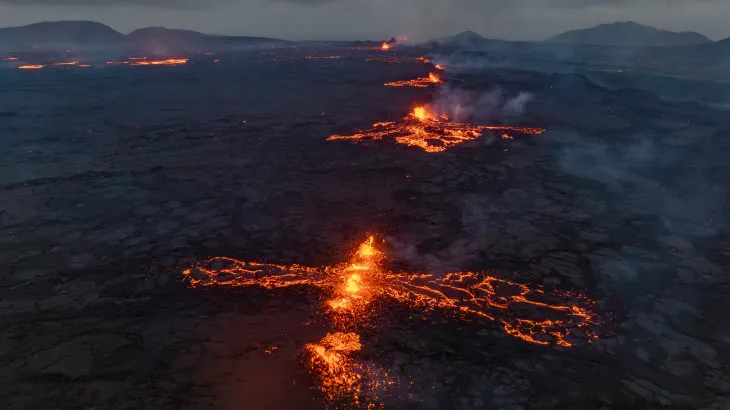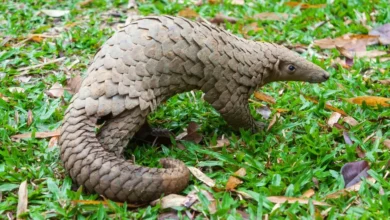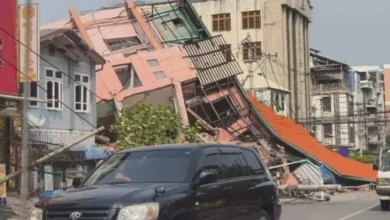‘Jets of magma’: Lava spurts from Iceland volcano, forcing evacuations

Lava continues to spurt from a volcano in southwestern Iceland after it erupted for a fifth time since December, forcing almost 4,000 people in a nearby fishing town to evacuate their homes.
After lying dormant for 800 years, the latest eruption of the Sundhnukur volcanic crater has been described by the Icelandic Meteorological Office as the most powerful in the area since volcanic systems on the Reykjanes peninsula became active three years ago.
As of late Thursday, the activity has reportedly calmed significantly, after a massive show of “nature’s fireworks” on Wednesday. Even so, authorities were still on alert on Friday for additional volcanic activities.
The eruption since Wednesday sent record levels of lava nearby.
Volcanologist Dave McGarvie calculated that the amount of lava initially flowing from the crater could have buried the football pitch at London’s Wembley Stadium at pace.
“These jets of magma are reaching like 50 metres (165 feet) into the atmosphere,” said McGarvie, an honorary researcher at Lancaster University. “That just immediately strikes me as a powerful eruption. And that was my first impression … then some numbers came out, estimating how much was coming out per minute or per second and it was, ‘wow.’”
A fissure has also opened up, stretching to at least 2.5km (1.6 miles) in length.
“It’s a continuous curtain of fire … but as it develops with time, it will focus into certain points and eventually often only one or two craters will be active in the long run,” Rikke Pedersen, an expert at the Nordic Volcanological Centre at the University of Iceland, told Al Jazeera. “But we can’t say that by now … We’re only observing the initial phase by now.”
The latest volcanic activity once again threatened Grindavik, a coastal town of 3,800 people, and led to the evacuation of the popular Blue Lagoon geothermal spa, one of Iceland’s biggest tourist attractions.
Swarm of earthquakes
Grindavik, which is about 50km (31 miles) southwest of Iceland’s capital, Reykjavik, has been threatened since earthquakes in November forced evacuations before the initial December 18 eruption. A subsequent eruption consumed several buildings.
Protective barriers outside Grindavik deflected the lava but the evacuated town remained without electricity and two of the three roads into town were inundated with the molten rock.
“I just like the situation quite well compared with how it looked at the beginning of the eruption yesterday,” Grindavik Mayor Fannar Jonasson told national broadcaster RUV on Thursday.
McGarvie said the eruption was more powerful than the four that preceded it because the largest amount of magma had accumulated in a chamber underground before breaking the earth’s surface and shooting into the sky.
Researchers have witnessed a pattern – a rapid and powerful start of the volcano’s eruption followed by it diminishing quickly several hours later, McGarvie said. It is unknown when eruptions will end.
None of the current cycle of eruptions have had an impact on aviation, with the nearby international airport remaining open.
Iceland, which sits above a volcanic hotspot in the North Atlantic, sees regular eruptions.
The most disruptive in recent times was the 2010 eruption of the Eyjafjallajokull volcano, which spewed huge clouds of ash into the atmosphere and led to widespread airspace closures over Europe.










